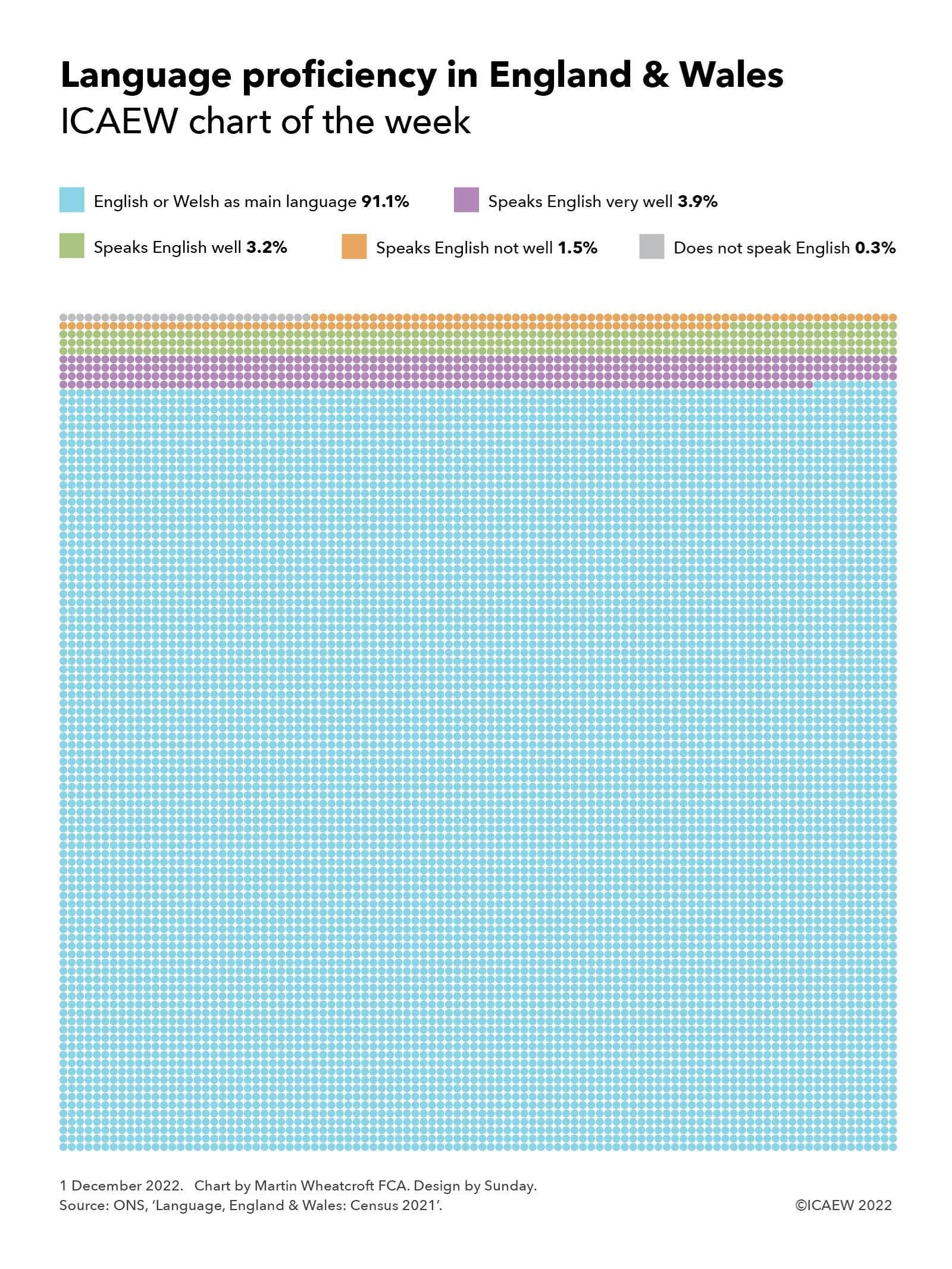
The Office for National Statistics (ONS) on 29 November released its latest batch of analysis from the 2021 Census, this time on ethnicity, national identity, language and religion.
Our chart this week delves into this by looking at language proficiency, illustrating how 91.1% (52.6m) of the population in England and Wales speaks English (or Welsh in Wales) as their main language.
A further 7.1% (4.1m) are classified as proficient in English, broken down into 3.9% (2.3m) who speak English very well and 3.2% (1.8m) who speak English well. The remaining 1.8% (1.1m) of the population can be broken down between 1.5% (0.9m) who speak some English and 0.3% (0.2m) who speak no English at all.
The top 10 languages spoken by those for whom English or Welsh was not their main language comprised Polish (612,000 or 1.1%), Romanian (472,000 or 0.8%), Panjabi (291,000 or 0.5%), Urdu (270,000 or 0.5%), Portuguese (225,000 or 0.4%), Spanish (215,000 or 0.4%), Arabic (204,000 or 0.3%), Bengali (199,000 or 0.3%), Gujarati (189,000 or 0.3%) and Italian (160,000 or 0.3%).
Surprisingly, the release does not include data on the proportion of Welsh language speakers in Wales, with a more detailed analysis scheduled to be published by the Welsh Government on 6 December.
The proportion of people who speak English (or Welsh in Wales) as their main language has dropped from 92.3% in the last census in 2011 to 91.1% in 2021, while the proportion of those with another main language who are proficient in English increased from 6.1% in 2011 to 7.1% in 2021. The proportion who do not speak English or who do not speak English at all increased from 1.6% in 2011 to 1.8% in 2021.
While the numbers not able to speak English proficiently remain relatively small as a proportion of the overall population, this still represents more than a million people who are unable to function effectively. Many will be newer arrivals in the process of learning English, but some will be longer-term residents who would benefit from better English language skills.
One question for both local authorities and central government is how much to invest in English language teaching. Finding the money is likely to be difficult at a time of constrained public expenditure budgets, but there may be savings elsewhere such as the cost of interpreters.
Join the Public Sector Community
For accountants and finance professionals working in and advising the public sector, this Community is the go-to for the key resources and guidance on the issues affecting practitioners like you. With a range of dynamic services, we provide valuable tools, resources and support tailored specifically to your sector.



